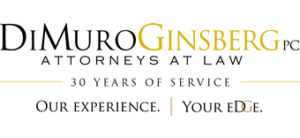eDiscovery and How to Best Use it
by Bethany Coan, eDiscovery Project Manager
eDiscovery (electronic discovery…I know you knew that) is here to stay! With thousands of emails and documents connected to individual parties, the amount of discovery law firms are receiving is not getting any smaller. Communications, containing incredibly important information for review, have expanded from simple emails, apps like “What’s App”, Facebook Messenger and Slack just to name a few. New online programs are available to make these communications easier for all, but knowing the most efficient and safest ways to use eDiscovery or any form of communication you choose, is of the utmost importance to your success.
Here are some of the most crucial tips to effectively working with eDiscovery
- Create a Timeline! Whether you are using online programs or reviewing your documents the old-fashioned way, creating a timeline using all of your documents will allow you to see exactly how all of the emails and their attachments fit together. The timeline will make it easier to find emails and events by certain dates. A timeline can also help you sort by sender, recipient, date, subject, etc. so you can track various points of information which is helpful to identifying key documents. Some eDiscovery review platforms offer this on their site, but you can create your own timeline using Excel (and save it to a central location available to all team members working on the case). I have found this incredibly helpful for finding hot documents and their connected email chain. It’s a great way to see everything laid out in a visual way instead of endless pages of emails. If the documents have been Bates-numbered, it is ideal to add the page numbers to the timeline for additional reference.
- Use Tags! This is the best way to identify key documents that you want to return to at a later point on any eDiscovery platform. The tags can be highly nuanced or much broader, but, either way, it can shave off valuable time searching for documents previously identified. Once the tags have been added, you can review all the documents that have been identified by these tags at one time. The online reviewing platforms will allow you to add as many tags as you would like. I have used tags like “Hot Docs,” “For RFAs,” “Exhibit [X],” and “Deposition” to identify important documents that are necessary for the many stages leading up to trial. The tagged names (i.e. Confidential, Attorneys Eyes Only) can be stamped at the bottom of the chosen pages once you are ready to download the production.
- Don’t Remove Metadata! If at all possible, it’s always better to upload an email in its native format rather than a PDF version of the same email. These eDiscovery programs are capable of performing searches based on the time/date an email was sent, who it was sent to, a specific phrase, etc., but once the metadata is removed, it is a flat image and it can be much harder to find the desired email. When receiving emails and documents from clients for discovery, strongly encourage them to give it to you in a native format to keep from losing that valuable and pertinent information. It will make the search process so much easier and faster. The eDiscovery platforms will detect the words in the PDF emails, but it is not nearly as accurate.
- Be Specific with Your Search Terms! The key to any good search is using the right search terms. Search terms that are too vague will produce an overwhelming number of documents to sift through. Utilizing Boolean Terms to combine keywords with operators and modifiers such as “AND”, “OR”, and “NOT” will create a richer context among the search terms you explore. The more specific you get, the smaller number of hits that will be returned. Include as much relevant information as you possibly can. eDiscovery platforms offer advanced searches for date ranges, email addresses, lists of names or numbers, etc. You can even designate words to be highlighted automatically when found from page-to-page.
To sum up: be organized, think ahead, be specific and let the programs work for you. You almost have to think like a program thinks as you use the program. Don’t be intimidated. eDiscovery is here and it’s the now and the future of how we will work to bring the best to our clients. Get on the bus.
